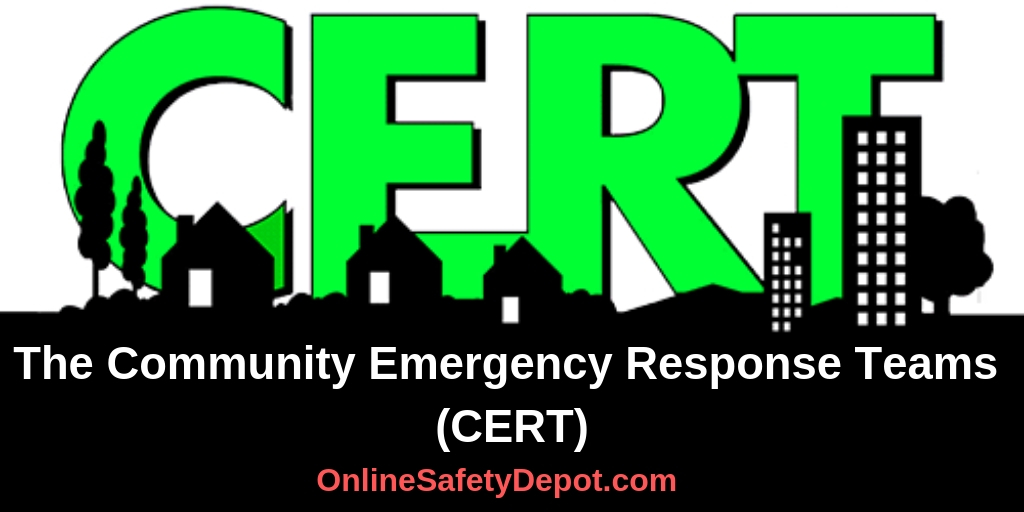The Community Emergency Response Teams (CERT)
In 1985 the Los Angeles City Fire Department developed the CERT concept, which focused on training individual community members with the skills and knowledge necessary to help out with earthquake response. The program would continue to be developed and improved upon each year to provide the emergency first responders with additional support from qualified community members. In 1993 FEMA took it a step further and developed what is known as the CERT program. Rather than just focusing on earthquake response operations, the program has grown to train individuals on all types of disasters around the country whether they are natural disasters or man-made.
Who can be involved CERT Program and why do we need CERT’s
The CERT program is training provided by FEMA for community members to help first responders when disaster strikes. Anyone can become a CERT member. It could be your neighbor, school teacher or grocery store clerk.
Individuals who wish to become a CERT member must complete a 20 hour training course that is delivered over a seven-week period. During the training, individuals will learn various skills and procedures that will enable them to safely and effectively support first responders during a disaster.
With the success of the Los Angeles City Fire Department starting in 1985, FEMA was quick to realize the need for such a program and began expanding the program which has grown to include more than 45 states.
When disaster strikes, large or small, it can overwhelm the resources of the first responders and their ability to provide aid to all those in need.
The following are some examples of when first responders are unable to immediately help those in need and CERT members are able to assist in helping others until professional help arrives.
1- Transportation – (due to broken or flooded roads,)
2- Communication ( when powerlines are down or they are victims are unable to call for help)
3- Damaged structures (First responders are unable to get into the building but a CERT member has access to victims)
4- Fires (Several small fires wide-spread that could grow if not extinguished sooner and CERT members simply provide more able bodies to help)
CERT members are able to assess the damage and help survivors. Additionally, CERT members are able to continue to help first responders long after first responders have arrived.
What will I learn in the program?
There are six modules in the CERT training course. Each module will have 2-4 lessons in each module for a total of 16 lessons that covers a wide range of topics that will help you know how to safely respond when a disaster strikes. The six modules are:
Module 1: CERT Basics
Module 2: Fire Safety
Module 3: Hazardous Material and Terrorist Incidents
Module 4: Disaster Medical Operations
Module 5: Search and Rescue
Module 6: Course Summary
You might also be interested in our other article titled, “Overview of the Community Emergency Response Team Program”
Work done by CERT team members
Since 1985, CERT members have been involved in providing support to their communities when disaster strikes. You may not always see or hear about them, but they have been there alongside the fireman, police and medical personal.
Some of the more recent disasters have shed light on the work that CERT members do and the help they provide. For example:
In 2008, Morgan county Indiana experienced excessive rain in a very short amount of time which resulted in the water diversion networks being over whelmed and the surrounding rivers and lakes flooding beyond the banks. Due to the floods, President George W. Bush declared 39 counties in central Indiana a federal disaster. CERT members and first responders worked tirelessly to help those in need.
CERT members worked to hand out food and disaster kits, assisting with sand bags, directing traffic and a lot of other supportive work that allowed the local, state and federal workers the ability to focus their resources on other aspects of the disaster relief efforts that they are uniquely qualified to do.
There are many other disasters that have occurred around the country since the program’s creation in 1985 and with each disaster, community CERT members were there to help survivors.Some of the tasks CERT members have done over the years are:
- Directing Traffic
- Filling sand bags
- Delivering supplies to the elderly, residents and emergency responders
- Staffing city phones
- Documenting damage
- Relaying important information
- Maintaining security around affected areas
- Helping with crowd control
- Comforting traumatized victims
- Assisting those with special needs
These are among just a few of the important tasks CERT members have performed to help their community and first responders during a time of crisis.
Conclusion
If you are interested in becoming a CERT member and helping to serve your community during a disaster, take time to study the material and contact FEMA to locate the best place for you to take the CERT training program.

